Trogir and Split are the well-known gateways to the yacht charter region of Central Dalmatia. Both cities are recommended not only as starting points, but also for shore excursions with their centuries-old cultural heritage. In front of the beautiful ports of departure, islands are relaxing in the turquoise sea, waiting for sailors in need of rest and relaxation. They are well-known and popular islands like Šolta, Hvar, Vis and Brač. They are larger than in the north and there are beautiful historical places and towns worth visiting. Nature lovers and active vacationers are guided by a network of hiking trails across the islands.
Compared to Northern Dalmatia, the islands do not lie as schön parallel to the mainland to deflect swell from the open sea as in the adjacent area. The distances are also somewhat longer. However, the district also offers a very good infrastructure with many marinas.
Climate: Mediterranean with temperatures between 15 and 28 degrees
.
Winds: Mistral, Jugo, Bora
Sailing season: May to September
Popular Yachts | Central Dalmatia
| Cabins: | 5 | Berths: | 10+2 |
|---|---|---|---|
| Year: | 2003 (2021) | Sail | Furling |
| Yacht-ID | 949 | L/D: | 15.40 / 1.80 |
| Cabins: | 3 | Berths: | 6+2 |
|---|---|---|---|
| Year: | 2015 | Sail | Battened |
| Yacht-ID | 11721 | L/D: | 9.99 / 1.60 |
| Cabins: | 4 | Berths: | 8+1 |
|---|---|---|---|
| Year: | 2013 | Sail | Furling |
| Yacht-ID | 4209 | L/D: | 14.27 / 2.10 |
| Cabins: | 4 | Berths: | 8+2 |
|---|---|---|---|
| Year: | 2016 | Sail | Furling |
| Yacht-ID | 7555 | L/D: | 13.85 / 1.90 |
| Cabins: | 3 | Berths: | 6+2 |
|---|---|---|---|
| Year: | 2019 | Sail | Battened |
| Yacht-ID | 19025 | L/D: | 11.90 / 1.85 |
| Cabins: | 4 | Berths: | 8+1 |
|---|---|---|---|
| Year: | 2005 (2020) | Sail | Furling |
| Yacht-ID | 951 | L/D: | 14.40 / 1.85 |
| Cabins: | 4 | Berths: | 8+2 |
|---|---|---|---|
| Year: | 2005 (2019) | Sail | Furling |
| Yacht-ID | 1744 | L/D: | 14.40 / 1.85 |
| Cabins: | 5 | Berths: | 10+2 |
|---|---|---|---|
| Year: | 2018 | Sail | Battened |
| Yacht-ID | 17155 | L/D: | 15.20 / 2.30 |
| Cabins: | 3 | Berths: | 6+1 |
|---|---|---|---|
| Year: | 2012 | Sail | Battened |
| Yacht-ID | 4168 | L/D: | 12.35 / 2.30 |
Yacht charter Central Dalmatia
A journey through the centuries: the world heritage cities of Trogir and Split
The most famous Croatian cities here are Trogir and Split, both easily accessible ports of departure. Both cities are UNESCO World Heritage Sites and combine a variety of historical sights.
The historic town of Kaštela, between the two larger ones, also offers a wide range of yachts for launching. The town is an association of small towns where impressive fortifications still exist and can be visited. Another smaller place alternative starting point is the town of Marina, west of Trogir.
The old town of Trogir is situated on a small. Here the sights are crowded close to each other. It is also partially still surrounded by the old city wall. The typical style of the town is Romanesque-Gothic, which is especially evident in the Cathedral of St. Lawrence from the 15th century. It stands in John Paul II Square and with it several others, such as the city loggia and the special clock tower, which also date from that period. Several palaces testify to the wealth of the Venetian nobility, such as the Cipiko Palace. The Kamerlengo fortress is also still well preserved, from which you can also enjoy a beautiful view of the city and the bay.
Split is the second largest city in Croatia and is also called the "capital of Dalmatia". What began as a Greek colony on the island of Vis, today extends on the mainland around the historical center, Diocletian's Palace, which was built around 300 AD. Not only the Romans, but after them the Venetians and Austrians left their mark architecturally in the town: the Cathedral of St. Domnius, the Town Hall, the Clock Tower and Venetian loggias, to name a few. In the 10-meter high statue of Bishop Grgur Ninski, who lived around 900, was immortalized one of the important people who became a symbolic figure for the Croats in their national awakening. Touching his big toe is said to bring good luck. Those who want to compact the important places with information can also participate in guided tours of the old town. An introduction to history is also offered by the City Museum, the Ethnographic Museum and the Archaeological Museum.
At the Green Market you can stock up on fresh fruit, vegetables and delicacies on board or already discover a few souvenirs at the antique flea market there. There is also a fish market in town. On the Riva waterfront, life takes place in numerous cafes, restaurants and konobas. A good destination both culinary and for going out.

Sightseeing, going out or a shopping spree - Trogir has it all. ©AdobeStock
Get out of the city and into the island world of Central Dalmatia.
Off the coast of central Dalmatia are the islands of Šolta, Brač, Hvar and Vis. Each of them has several safe harbors, beautiful anchorages and, above all, its own unique character. Olive and fig trees, vines and dense mixed forests surround bays and small harbors with the most beautiful picture postcard panoramas. If you like hiking as well as sailing, you can change from boat shoes to hiking boots on the Makarska Riviera. The steeply rising Biokovo mountains look just as impressive from the sea as the reverse view from the national park peaks to the Mediterranean Sea.
For a longer stay, the continuation of the cruise towards southern Dalmatia to islands like Korčula and Mljet as well as Dubrovnik, the pearl of the Adriatic, is suitable. Or turn toward northern Dalmatia to explore the islands of Kornati and Krka National Park.
Green Šolta near Split
For those seeking nature, the island of Šolta south of Čiovo is the place to go. Especially in the southern part of the island there are many small bays with beaches for swimming and snorkeling, such as Sesula, Poganica or Jorja. In the small coastal villages like Maslinica, Stomorska and Rogac there are restaurants and konobas with local specialties and local wine list. At the markets you can buy local products such as wine and olive oil. If you want to get an insight into the production, you can participate in tastings or guided tours at the individual wineries and olive oil producers. In front of the fishing village Maslinica there is another archipelago with seven small islands where you can swim and snorkel.
Hvar: olive groves, lavender fields and wild herb meadows
Behind Šolta, a little further in the Adriatic, lies the island of Hvar with its main town of the same name. Due to its favorable climate, the island established itself as a destination for spa tourists as early as the 19th century. Being one of the sunniest islands in Europe, it is also ideal for swimming and relaxing. Around the island there are many bays and beaches, as well as on the associated archipelago Paklinski otoci. Sandy beaches can be found, for example, in the bay Palmizana. The area around the islands Paklinski otoci is also a popular diving area, therefore there are several diving bases on Hvar. Besides vineyards and olive groves, lavender fields and other herbs characterize the island landscape and its fragrance. If you want to experience the island with all your senses and know more about the herbs, you can take part in a herb walk. At the same altitude on the mainland, overlooking the islands and backed by the mountainous landscape of Biokovo, lies Baška Voda. The charm of the contrast between the sea and the mountains can be experienced on several hiking and biking trails around the town. The so-called Makarska Riviera, on which Baška Voda is located, captivates with its rugged mountain landscape, which opposes the blue sea with green slopes.
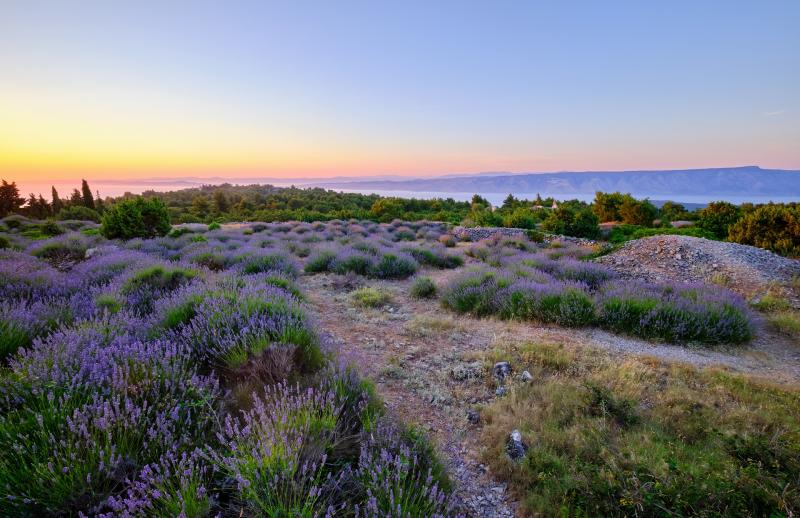
A shore excursion on the island of Hvar is definitely worthwhile. Discover the island with the most hours of sunshine in Croatia and enjoy the unique landscape, for example, on a hike. ©AdobeStock
Vineyards and fresh fish - the fishing island of Vis
The furthest away from the Croatian mainland is the island of Vis. Due to this location, it has been occupied by various peoples and nations for strategic purposes in the past. This can still be seen today in the fortifications and former military installations, such as barracks, a submarine harbor and bunkers. Today, vacationers benefit from the location with beautiful bays and beaches as well as clear water, ideally suited for diving and snorkeling. Stiniva bay in the southern part of the island is a small natural bay that narrows in a rocky break and then widens again a bit. Since it is not so easy to reach from land, boaters have a clear advantage, but it can still get crowded here in the high season. Off the south coast are other small islands. Here, in the course of time, caves and grottos have formed, in which the water shines in completely different colors. At certain times of the day, the Biševo cave is bathed in an intense blue, while on Raznik it is more of a green. Since the visibility is better in the Green Grotto on Ravnik, swimming and diving are also allowed here.
One of the most beautiful places on the island is Komiza and it is located in a deep bay, at the foot of the mountain Hum. Fishing is deeply rooted in Komiza and its history has been rehashed in the Fishing Museum, which is located in Komuna, a fortress from Venetian times. Another economic branch, which is still cultivated after more than two thousand years, is the cultivation of wine. Vugava and Plavac are the most typical wines of the island. They can be tasted at the wineries or in combination with local dishes in the restaurants and konobas, for example on the waterfront. Narrow streets wind through the town past old houses. On the east side of the bay are several pebble beaches.

A nice cruising destination from a culinary and relaxation point of view: the island of Vis. ©AdobeStock
Yacht charter Central Dalmatia - set sail with 1aYachtcharter!
Blog | Mitteldalmatien
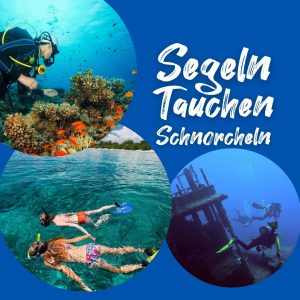 Jul 30, 2024
Jul 30, 2024Die besten Reviere zum Segeln, Tauchen und Schnorcheln
Schnorcheln und Tauchen ziehen sowohl Abenteuerlustige als auch Naturliebhaber an. Für jeden gibt es passende Ziele. Im Folgenden finden Sie Schnorchel- und Tauchspots in Segelrevieren im nahegelegenen Mittelmeer als auch…
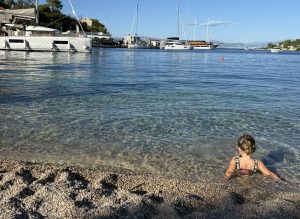 Nov 7, 2025
Nov 7, 2025Törnbericht Mitteldalmatien: Familientörn ab Solta nach Brač und Hvar
Wer: Dirk Kommol und Familie mit befreundeter Familie Crewgröße: 8 Personen Wann: 1 Woche vom 13.09. bis 20.09.25 Route: Šolta – Brač – Stari Grad (Hvar) – Taršče Bay…
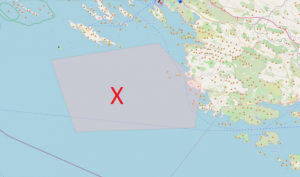 Sep 9, 2025
Sep 9, 2025Militärübung vor Žirje: Wichtige Hinweise für Segler und Chartergäste
…Crews sollten ihre Routen in Mitteldalmatien entsprechend anpassen, um Wartezeiten und Gefahren zu vermeiden. Häfen in der Nähe, wie Šibenik oder Kaprije, sind von der Übung nicht betroffen und können…
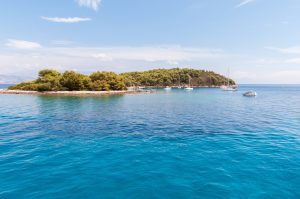 May 30, 2024
May 30, 2024Kroatische Inseln: Hvar – Insel der Sonne
…malerischen Garten. Das kleine Städtchen Jelsa an der Nordküste von Hvar. Zur Yachtsuche Mitteldalmatien Bei Interesse an einem unverbindlichen Angebot oder Fragen zu einer Yachtcharter in Mitteldalmatien kontaktieren Sie uns…
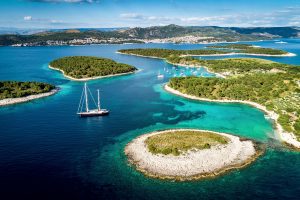 May 22, 2024
May 22, 2024Kroatien – Finden Sie Ihr Revier!
…Trotz ihres eher kargen Bewuchses sind die Kornaten ein beliebtes Törnziel in Norddalmatien. ©AdobeStock Mitteldalmatien – Weltkulturerbe-Städte und Inselhopping In einer der beiden UNESCO-Weltkulturerbe-Städte könnte Ihr Törn in Mitteldalmatien starte..

